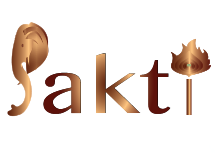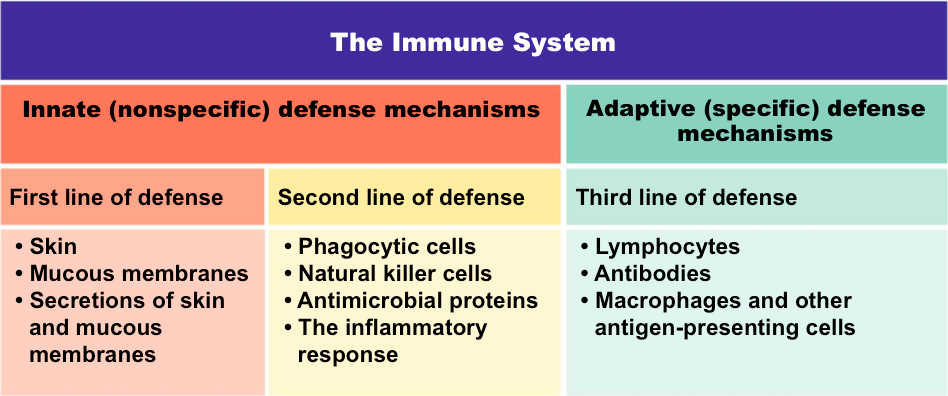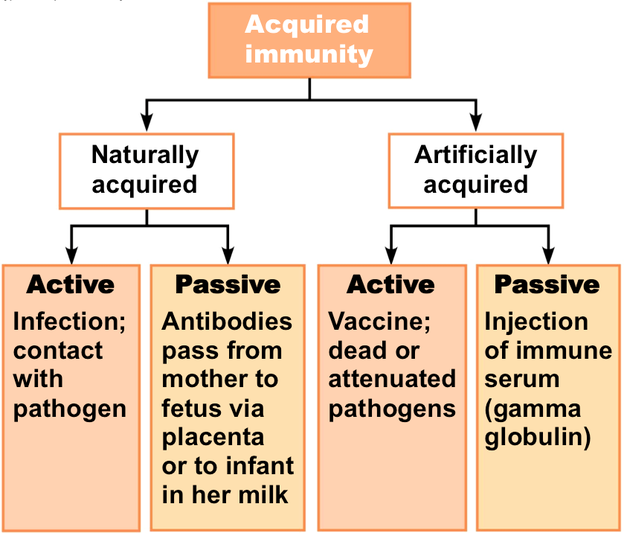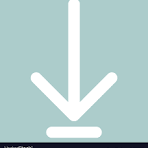The immune system is an organization of cells and molecules with specialized roles in defending against infection. There are two fundamentally different types of responses to invading microbes. Innate (natural) responses occur to the same extent however many times the infectious agent is encountered, whereas acquired (adaptive) responses improve on repeated exposure to a given infection.
The Immune Response:
-
Innate Immunity:This is the body’s first line of defense, involving physical barriers like skin, mucus membranes, and enzymes. The innate responses use phagocytic cells (neutrophils, monocytes, and macrophages), cells that release inflammatory mediators (basophils, mast cells, and eosinophils), and natural killer cells.It also includes chemical defenses like the complement system and substances like interferons and interleukin-1.
-
Adaptive Immunity:This is a more targeted response that learns to recognize and remember specific antigens. B cells produce antibodies, which are proteins that bind to specific antigens, tagging them for destruction.
-
T cells:These cells play a crucial role in activating other immune cells and recognizing and destroying infected cells.
-
Memory:Once the immune system has successfully fought off an infection, it remembers the antigen, allowing for a faster and more effective response if the same invader enters the body again.
Key Players:
-
White blood cells:These cells are the main players in the immune response, patrolling the body and identifying and eliminating foreign invaders.
-
Antibodies:These proteins are produced by B-cells and specifically bind to antigens, marking them for destruction or neutralizing their effects.
-
T-cells:These cells recognize and destroy infected cells, activating other immune cells and playing a vital role in the immune response.



